|
NHRN:
Our Native Home Resource Network program was designed to help families address health and safety home repair needs. Our case managers work with home owners to assess their needs and available resources and then leverage our networks to gather the missing components to complete needed repairs. Often, it takes multiple resources in order to fully address the needs of a given family. One example of an NHRN resource is a Housing Preservation Grant we were recently awarded from USDA Rural Development to help Navajo families living in Cameron, AZ. We also have specific funding from Kendal Charitable Funds that helps us conduct aging in place assessments for tribal elders and provide them with simple home modifications like grab bars, anti-slip mats, toilet risers, and LED lighting. Currently we have over 136 families that have contacted us for assistance. Our policy is to give each family a minimum of an hour of our time, in which we provide them with advice and referrals. As our capacity allows, we then move these cases into an active management status. At this time, we are actively helping 19 families find the resources for their housing repair needs. The recent addition of Shannon Maho to our team has greatly increased our capacity to service more active cases. Professional Weatherization: We are now in our fourth year providing professional home weatherization services to Hopi and Navajo families that receive electricity from APS. Since the start of 2019, two Hopi professionals, employed by our subcontractor CozyHomes, LLC, have been able to make substantial improvements to the comfort and energy efficiency of 14 homes so far. Ensuring that the envelope of a home (roof, siding, windows, doors) and insulation are intact is often our first priority to ensure families have the basic framework for a healthy home. Many of the families that come to us through this program also require the help of NHRN to resolve health and safety repairs that are not covered under our contract with APS. We are grateful to have this case management program to help families find additional funding when necessary. Healthy Heating: Over the past year we developed a new healthy heating educational program with support from the University of Arizona Foundation’s Agnese B. Nelms Haury Program in Environment and Social Justice. Now with their additional support, we are developing a heating demonstration site to introduce two alternative heating technologies to the Hopi community and learn more about their performance. The driving need for this work is coal, the primary fuel source for many Hopi and Navajo families, is expected to become very scarce at the end of 2019 with the closure of Navajo Generating Station. Now, more than ever, healthy heating alternatives are needed, and Red Feather is working earnestly to respond to this need. Four Corners Stove Replacement and Weatherization Program: We are now helping to facilitate a project in the Four Corners region of New Mexico on the Navajo Nation that seeks to improve indoor and outdoor air quality by providing cleaner heating appliances and increasing home heating efficiency in 500 area homes. Many families burn coal and wood to heat their homes, often with older, inefficient appliances that can contribute to disproportionate rates of respiratory disease. The funding for the work is provided via a consent decree by Arizona Public Service, Southern California Edison, and other owners of the Four Corners Power Plant. Roy Hosteen has joined the Red Feather staff to coordinate this program. The duration of the project is expected to be about three years, and Red Feather is honored to have been asked to play a part in this important work. 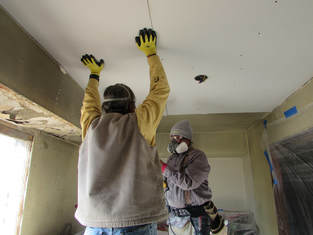 It has been another busy year for our home weatherization program. We are now working in 10 of the 12 Hopi villages - last year we were primarily working in just one – and are now accepting applications from Navajos. For 2018 we have already substantially weatherized 38 homes and recently received a $100,000 extension to our contract that will help more families get ready for the coming winter and keep our local 2-person crew employed. One the great benefits of home weatherization is the impact it has on improving the comfort of the indoor living environment, which includes making homes cooler in the summer and warmer in the winter. A well weatherized home requires less heating and cooling, which in the case of many Hopi and Navajo households means a reduction in the use of coal burning during winter months. Less coal burning can result in cleaner air quality, both indoor and outdoor, which can reduce wide-spread respiratory ailments. Additionally, more efficient homes also have lower energy costs, which are often a crippling financial burden for many low-income households. In fact, low-income U.S. households spend 7.2 % of their income on utilities bills, which is more than two times that of median income households (3.5%) and three time greater than higher income households (2.3%). This results in families having to make difficult decisions, such as sacrificing food quality and medical care over keeping their home warm or lights on. The U.S. Department of Energy reports that after weatherization, families have homes that are “more livable, resulting in fewer missed days of work and decreased out-of-pocket medical expenses by an average of $514 (per year).” Additionally, at each house we visit, we spend time educating family members not only about ways they can further reduce their energy bills, but also about the connection between their health and their home environment-covering a variety of topics from mold and lead paint to pest management. Special thanks to APS for funding this home weatherization program as well as funding our DIY Home Weatherization and Women’s DIY Home Repair workshops that we will be delivering this fall.  This summer, Red Feather worked with partners to host two hardworking crews of young adults who fixed up 90 Northern Cheyenne homes. You may recall last summer we partnered with St Labre Indian School and Catholic Heart Work Camp to paint, build wheelchair ramps, and perform other maintenance and safety repairs on 40 Northern Cheyenne Homes. This summer those same organizations and even more volunteers did similar work on 47 homes. And if that wasn’t enough, a few weeks later another group of volunteers from Group Work Camp came and were able to similarly fix up 43 homes. That's 90 homes improved in 2 weeks! “These repair blitz’s take a lot of coordination and planning, but so much work gets done in such a short amount of time, we’ll do anything we can to help”, said John Marian, one of the head “trouble-shooters” for both weeks. “My job is to make sure the numerous workgroups have the tools and materials they need, understand the approach to take, and are following safety procedures…oh and having fun too,” he added with a smile. Northern Cheyenne’s Housing Improvement Program was instrumental in helping to prioritize the projects and coordinate their successful completion. This marks another important example of how, by partnering with tribal agencies, Red Feather can bring resources from outside the tribe to help meet their needs. We are grateful to have such hardworking and caring partners. 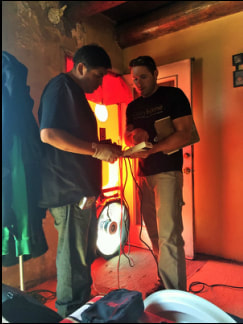 As reported in the spring newsletter, Red Feather launched a new home weatherization program in April. The program is funded through a contract with Arizona Public Service (APS) which reimburses Red Feather for all qualified weatherization expenses incurred on APS customer homes up to $6,000 per home. APS provides electricity to those residents of Hopi and the Navajo Chapters of Tuba City and Cameron; at least to those fortunate enough to be connected to the grid. To get the program started we are partnering with the Hopi Village of Shungopavi, where we are grateful to have the guidance and assistance of their Village Community Service Administrator, Sandy Whitehair. Since the program’s debut, the energy efficiency, comfort, health and safety of 15 homes that are occupied by 56 individuals have been drastically improved. An additional 16 homes are in-line for services, with new applications being submitted each week. We have contracted with a great weatherization expert, Eli Chamberlin of CozyHomes Inc. He is employing three full-time Hopi workers and is looking to hire another who is skilled in carpentry, and dry-walling. These are new jobs in the community that did not exist before. Five households have been transitioned to Red Feather’s Native Home Resource Network (NHRN) program due to excessive health and safety issues in the home that make it ineligible for the weatherization program. NHRN is a program funded through a grant from Wells Fargo that matches families with housing needs to resources that exist either in their tribe or outside their tribe. Customer satisfaction surveys from occupants of our weatherized homes have been overwhelmingly positive. “Thank you very much, for your excellent work will help so many families on improving their home where this kind of work would not have been possible.” Another comment we overheard was, “I’m actually looking forward to winter for once!”. To date over $60,000 has directly been invested in materials, labor, and educational outreach for the program and about 40% of that money stays in the community. Red Feather could not be happier with how this program is developing and as soon as we have a little more experience with it we have plans to expand the program to other Hopi Villages and Navajo Chapters. 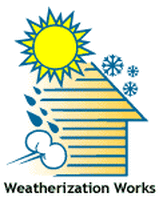 As the weather begins to turn from the heat of summer to the more pleasant temperatures of autumn, and before the cold sets in, it is the perfect time to think about weatherizing our homes. You’ll read throughout this newsletter the commitment that Red Feather is making to: educate people about the importance of weatherization, empower them to weatherize their homes, and ensure those who aren’t able to help themselves are not forgotten. You may ask yourself, why focus on weatherization? Or maybe even, what is it? We all know a shelter’s purpose is to keep us alive first, and comfortable second; and it does this by shielding us from all manner of unpleasant weather: cold, hot, wet, wind, etc. What weatherization does, is make a home more resilient to those outside conditions, while at the same time lowering the family’s energy bill. For those of us who are financially secure, we rarely consider what it takes to maintain a comfortable living environment. When the temperatures drop we just see a higher utility bill at the end of the month, pay it, and don’t give it much more thought. Imagine if changes in the weather meant your children would have less to eat, or you couldn’t afford the gas to get to work? Unfortunately, many in the tribes we serve struggle every winter to pay monthly heating bills. On average, households with incomes below the Federal Poverty Level pay 27% of their annual income simply on home energy bills. There are numerous important reasons for all of us to limit our energy consumption. The obvious reasons are the harmful effects that the mining and burning of fossil fuels has on the water we drink and the air we breathe. Here is one of the less obvious ways that weatherization helps the planet. For the communities we serve, the most common heating source is wood. Tribal woodsmen are having to drive their trucks farther and farther to harvest younger and younger trees to keep reservation homes warm during the winter. Even a small improvement in the energy efficiency of those homes can help begin to restore those forests. Forests that we so urgently need to clean our air. Finally, weatherization is an entry point for learning about home maintenance, and also draws the connection between home environment and occupant health. Our workshops not only build awareness of potential health and safety risks in the home, but also build the students’ confidence to address the smaller jobs themselves, and encourage collaboration with other community members for larger projects. We are forever grateful for the support from electrical utility provider, APS, which is enabling us to educate people and weatherize homes in Arizona, and likewise for the grant we received from the Shakopee Mdewakanton Sioux Community, which will allow us to teach a DIY Weatherization class for the Northern Cheyenne tribe in October. Where those funding sources leave off and your donations take-over is when we find problems in the homes of students that require more money to address. Your support is what enabled us to renovate the Curley family home which you will read about later in this newsletter. Please spread the word about this need and what we can all do together to address it. Please go to redfeather.og and “Donate Now.” Then stay tuned for an update on the families we were able to help together. |
Archives
June 2023
Categories
All
|
|
Change your mind at any time by clicking 'unsubscribe' in any email you receive or by contacting us at [email protected]. We will treat your information with respect. For more information about our privacy practices please see our privacy policy. By clicking above, you agree that we may process your information in accordance with these terms.
In compliance with all GDPR requirements- you can request any data you’ve shared with Red Feather to be permanently deleted from our records by contacting us at [email protected]. |
WORKING WITH HOPI AND DINÉ
COMMUNITIES FOR HEALTHIER AND SAFER HOMES.
LAND ACKNOWLEDGEMENT: The Red Feather program office sits in an area that is sacred to over 14 local tribes, including the Diné, Hopi, Havasupai, Hualapai, Zuni, Pueblo, and Kaibab-Paiute peoples. Some of these nations are represented among the Red Feather staff, and some not. We humbly acknowledge this area’s Indigenous nations, original stewards and Native descendants who will forever know this place as home. We share a responsibility to recognize and acknowledge the people, cultures, and histories that make up our community. *Adapted from the Flagstaff City Council land acknowledgement developed by the Indigenous Commission

If you have a disability that limits your ability to access our facilities, please contact us so we can arrange for an alternative meeting location. See our ADA access plan here.
This institution is an equal opportunity provider. |


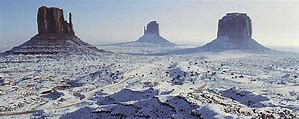
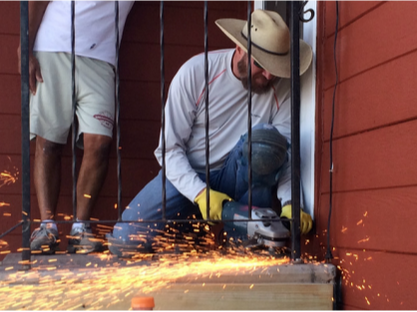

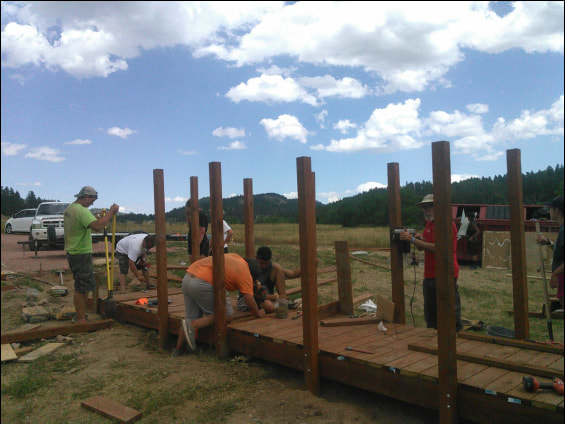


 RSS Feed
RSS Feed

